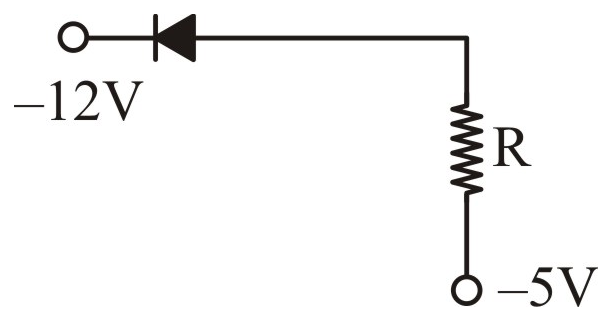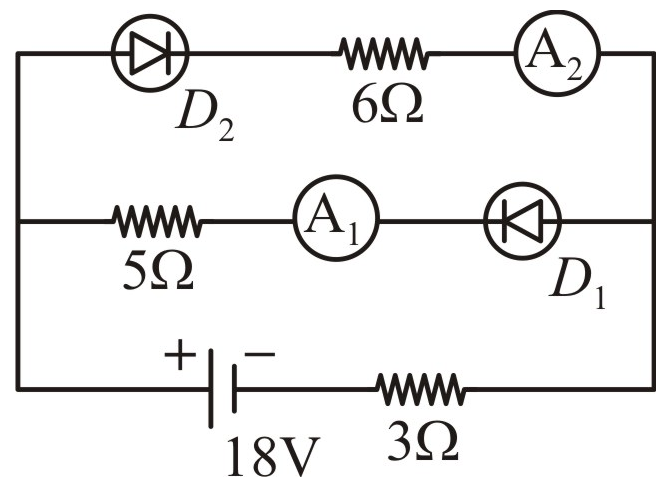If the reverse bias in a junction diode is changed from \(5\) V to \(15\) V then the value of current changes from \(38~\mu \text{A}\) to \(88~\mu \text{A}\). The resistance of junction diode will be:
1. \(4\times10^{5}\)
2. \(3\times10^{5}\)
3. \(2\times10^{5}\)
4. \(10^{6}\)
The given circuit has two ideal diodes connected as shown in the figure below. The current flowing through the resistance \(R_1\) will be:
| 1. | \(2.5\) A | 2. | \(10.0\) A |
| 3. | \(1.43\) A | 4. | \(3.13\) A |
1. \(2\) A and zero
2. \(3\) A and \(2\) A
3. \(2\) A and \(3\) A
4. zero and \(2\) A
Of the diodes shown in the following diagrams, which one of the diodes is reverse biased?
| 1. |  |
2. |  |
| 3. |  |
4. |  |
| 1. | \(1.0 \times 10^6 ~\text{V/m}\) | 2. | \(1.0 \times 10^5 ~\text{V/m}\) |
| 3. | \(2.0 \times 10^5 ~\text{V/m}\) | 4. | \(2.0 \times 10^6 ~\text{V/m}\) |
For the given circuit of the \(\mathrm{p\text-n}\) junction diode, which of the following statements is correct?
| 1. | In F.B. the voltage across \(R\) is \(V\). |
| 2. | In R.B. the voltage across \(R\) is \(V\). |
| 3. | In F.B. the voltage across \(R\) is \(2V\). |
| 4. | In R.B. the voltage across \(R\) is \(2V\). |
Reverse-bias applied to a junction diode:
| 1. | lowers the potential barrier |
| 2. | raises the potential barrier |
| 3. | increases the majority carrier current |
| 4. | increases the minority carrier's current |
| 1. | the drift of holes. |
| 2. | diffusion of charge carriers. |
| 3. | migration of impurity ions. |
| 4. | drift of electrons. |
The barrier potential of a \(\mathrm{p\text-n}\) junction diode does not depend on:
1. diode design
2. temperature
3. forward bias
4. doping density
| 1. | \(V_B\) increases, \(x\) decreases | 2. | \(V_B\) decreases, \(x\) increases |
| 3. | \(V_B\) increases, \(x\) increases | 4. | \(V_B\) decreases, \(x\) decreases |





